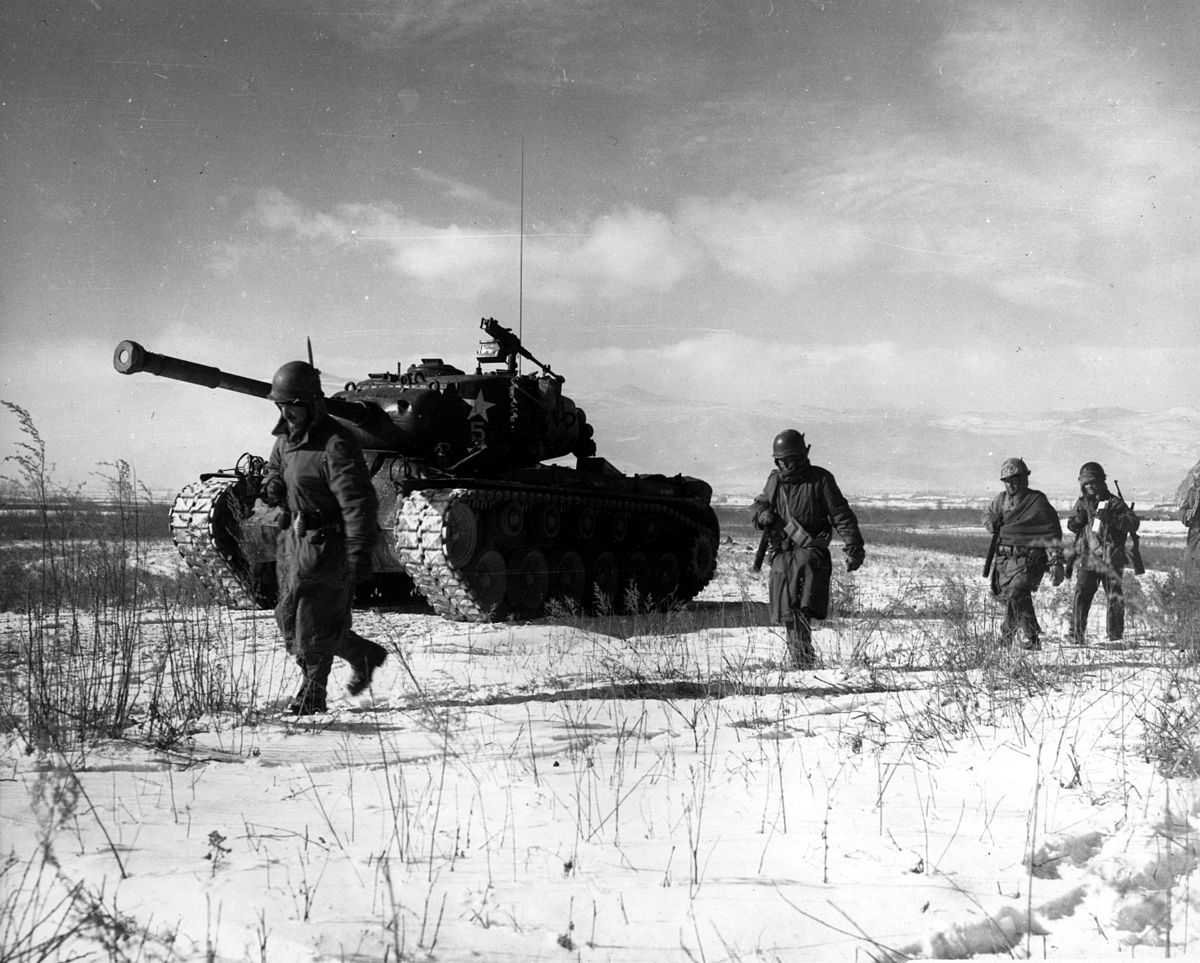After failed attempts of negotiations on unification,
North Korean army (Korean People's Army or KPA) forces crossed the border and formally launched their offensive against South Korea on 25 June 1950.
[39][40] The
United Nations Security Council denounced North Korea's actions as an invasion and
authorized the formation of the
United Nations Command and the dispatch of forces to Korea
[41] to repel it.
[42][43] The Soviet Union was boycotting the UN for recognizing
Taiwan (Republic of China) as China,
[44] and the People's Republic of China was not recognized by the UN, so neither could support their ally North Korea at the Security Council meeting. Twenty-one countries of the United Nations eventually contributed to the UN force, with the United States providing around 90% of the military personnel,
[45] and represented the first attempt at
collective security under the United Nations system.
[46]
After the first two months of war, the
South Korean army (ROKA) and hastily dispatched American forces were on the point of defeat, retreating to a small area behind a defensive line known as the
Pusan Perimeter. In September 1950, a
risky amphibious UN counteroffensive was launched at
Incheon, cutting off KPA troops and supply lines in South Korea. Those who escaped envelopment and capture were forced back north. UN forces then
invaded North Korea in October 1950 and moved rapidly towards the
Yalu River—the border with China—but on 19 October 1950, Chinese forces - the
People's Volunteer Army (PVA) - crossed the Yalu and entered the war.
[39] The
UN retreated from North Korea following the PVA's
First Phase Offensive and the
Second Phase Offensive. China along with their North Korean allies pressed their offensive, invading the South and capturing Seoul by early January of 1951. A UN force
recaptured the city from them, and the communist forces were
pushed back to positions around the 38th parallel following PVA's abortive
Fifth Phase Offensive. After this, the front which was close to where the war had started stabilized, and the last two years were a
war of attrition. The war in the air, however, was never a stalemate. North Korea was subject to a massive U.S. bombing campaign.
Jet-powered fighters confronted each other in
air-to-air combat for the first time in history, and Soviet pilots covertly flew in defense of their communist allies.
The fighting ended on 27 July 1953 when the
Korean Armistice Agreement was signed. The agreement created the
Korean Demilitarized Zone (DMZ) to separate North and South Korea, and allowed the return of prisoners. However, no
peace treaty was ever signed, and the two Koreas are technically still at war, engaged in a
frozen conflict.
[47][48] In April 2018, the leaders of North and South Korea met at the DMZ
[49] and agreed to work toward a treaty to end the Korean War formally.
[50]
The Korean War was a major conflict of the Cold War and among the most destructive conflicts of the modern era, with approximately 3 million war fatalities and a larger proportional civilian death toll than
World War II or the
Vietnam War. It resulted in the destruction of virtually all of Korea's major cities, with thousands of massacres committed by both sides—including the
mass killing of tens of thousands of suspected communists by the South Korean government, and the torture and starvation of prisoners of war by the North Koreans. North Korea became among the most heavily bombed countries in history.
[51] Over the course of the war 1.5 million North Koreans are estimated to have fled North Korea.
[52]



